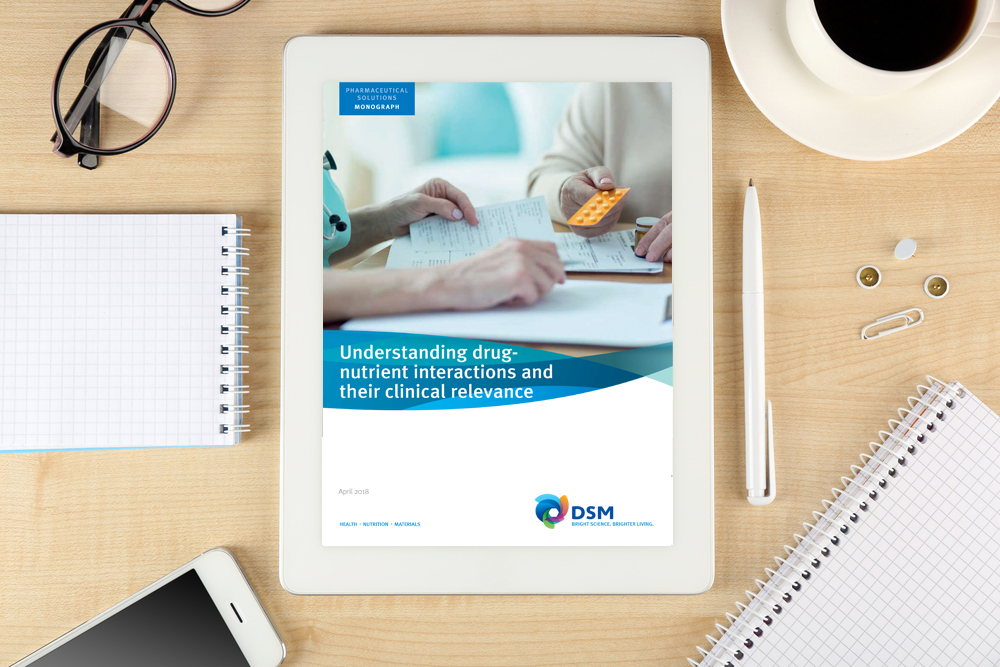Monograph: Understanding drug nutrient interactions and their clinical relevance
Posted: 31 May 2018 | DSM | No comments yet
Both over-the-counter (OTC) and prescription medications are used every day to manage many health problems…
It is estimated that 70 per cent of Americans take at least one prescription drug, and more than 50 per cent take two, on a regular basis. Yet, despite the high prevalence of medication use globally, it remains critical that drugs are prescribed with extreme caution and accuracy, to ensure successful treatment and patient safety.
In cases where guidance is not adhered to correctly, the patient may be at risk of an adverse drug interaction. Typically, drug-drug interactions come to mind however, interactions can also exist between drugs and nutrients. A drug-nutrient interaction (DNI) is defined as a physical, chemical, physiological or pathophysiological relationship between a drug and a nutrient present in a food or a supplement, often occurring as a result of accidental drug and/or nutrient misuse or lack of knowledge. While mostly preventable or curable, failure to identify and properly manage DNIs can lead to severe, or even life threatening, consequences and a negative impact on patient outcomes. One study that examined 458 US patients taking prescription medicines found that 43 per cent were taking supplements. 45 per cent of this population was at risk of one or more interactions, of which 6 per cent were potentially serious. Another report concluded that high dietary intakes from supplements with certain nutrients may have negative health outcomes.
Given the increase in the number of drugs on the market, aging populations and widespread supplement use, understanding these reactions is crucial. Yet, after 40 years of scientific interest in DNIs, their clinical significance still remains unclear. This monograph aims to raise awareness of the prevalence and clinical relevance of DNIs, as well as the current regulatory situation, by presenting recent scientific evidence and relevant case studies.
The rest of this monograph is restricted - login or subscribe free to access


Why subscribe? Join our growing community of thousands of industry professionals and gain access to:
- bi-monthly issues in print and/or digital format
- case studies, whitepapers, webinars and industry-leading content
- breaking news and features
- our extensive online archive of thousands of articles and years of past issues
- ...And it's all free!
Click here to Subscribe today Login here
Related content from this organisation
Related topics
Drug Development, Drug Safety, QA/QC, Research & Development (R&D)










